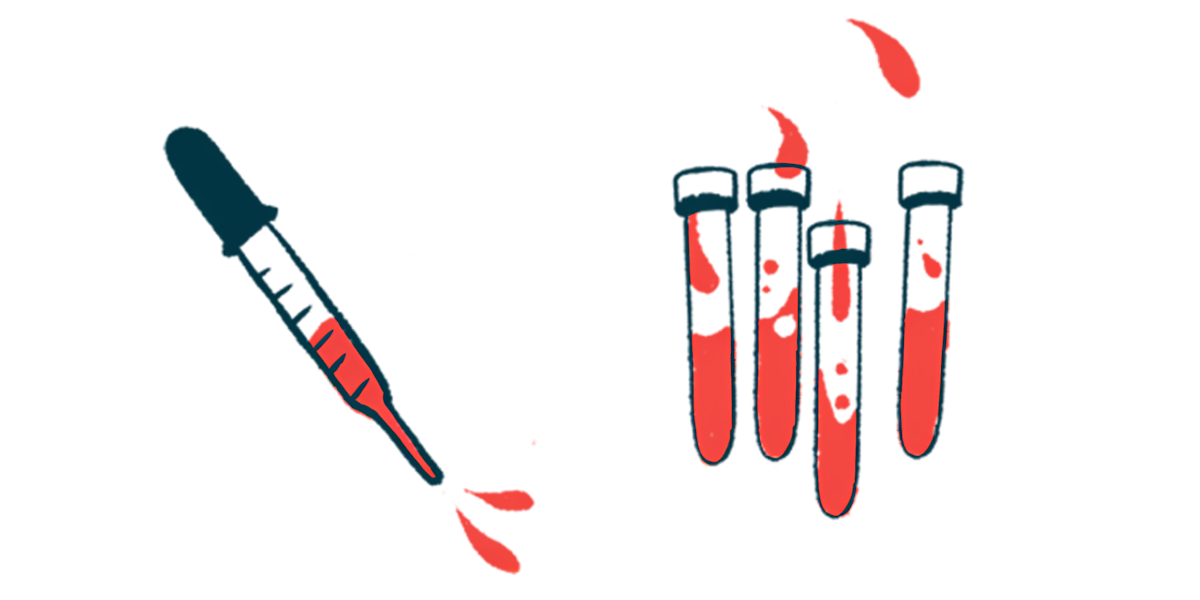Blood immune markers may predict ITI response in hemophilia A
Immune tolerance induction used for patients who develop inhibitors

In people with hemophilia A, certain immune markers in the blood may help predict patient responses to immune tolerance induction (ITI) — a treatment regimen used for individuals who develop inhibitors after factor replacement therapy — according to a new study by researchers in Brazil.
Inhibitors, neutralizing antibodies that develop in some patients, are a major challenge in hemophilia care because they can make replacement therapies less effective. ITI is an intensive treatment that aims to eliminate these inhibitors.
“Patients who failed ITI had higher concentration of [five such immune markers] in comparison with complete responders, suggesting that these biomarkers could be potential predictors of ITI [response],” the researchers wrote.
The study, “Longitudinal Evaluation of Immunological Biomarkers in Previously Untreated/Minimally Treated Patients With Severe and Moderately Severe Haemophilia A During Exposure to Factor VIII: Results From the HEMFIL Study,” was published in the journal Heamophilia.
A genetic disorder, hemophilia A is caused by mutations in the F8 gene that result in a deficiency of factor VIII, called FVIII, which is a protein essential for proper blood clotting. As such, easy and excessive bleeding is among the most common symptoms experienced by patients.
Standard treatment for people with hemophilia A involves factor replacement therapy, in which FVIII is infused into the bloodstream to restore clotting capacity. However, about one-third of patients develop inhibitors, or antibodies that block the activity of the infused FVIII, limiting the therapy’s effectiveness.
Patients with inhibitors often treated with immune tolerance induction
Patients with high-responding inhibitors — those who produce a strong and quick immune response to FVIII — are often treated with ITI, a regimen of frequent and prolonged FVIII infusion. ITI aims to train the immune system to tolerate factor replacement therapy and eradicate these inhibitors.
While the exact mechanisms that drive inhibitor development are not fully understood, they are thought to involve immune cells such as B-cells, or antibody-producing immune cells, with the support of certain T-cells. In addition, inflammatory mediators, such as proteins called cytokines and chemokines, are believed to help shape the immune environment that leads to inhibitor formation.
According to the researchers, “to date, no study has investigated immunological biomarkers in previously [untreated or minimally treated people with hemophilia A] undergoing FVIII replacement therapy and in the context of ITI in [an observational study].”
To fill this gap, the team analyzed data from 100 infants with hemophilia A enrolled across five treatment centers in Brazil between October 2013 and December 2021. Among them, 97% had severe disease, and 3% had moderately severe hemophilia. The infants’ median age was 0.8 years.
At the time of inclusion, 88% of the children had never been treated with FVIII, while the remaining 12% had only minimal exposure of five or fewer days. All patients were treated only with a lab-made form of FVIII.
Blood samples and clinical data were collected at inclusion (T0), at inhibitor development or after 75 FVIII exposure days (T1), and, for those undergoing ITI, at the end of therapy (T2).
A total of 37 patients developed FVIII inhibitors, of whom 32 had high-responding inhibitors and began ITI. Patients who developed inhibitors were generally younger at enrollment and started preventive treatment earlier than those who did not. High-risk F8 mutations also were more common in the inhibitor-positive group.
At the time of inclusion, there were no significant differences in the concentrations of immune biomarkers between infants who developed inhibitors and those who did not. “Indeed, this was expected,” the researchers noted, “since their immune system had not yet been exposed (or had been minimally exposed) to FVIII at the time of the sample collection (T0).”
When comparing biomarker levels from T0 to T1, patients without inhibitors showed a decrease in anti-FVIII IgG1, an antibody subtype typically produced early in immune responses. In contrast, inhibitor-positive patients showed rising levels of both total FVIII antibodies and IgG4, a subtype associated with long-term or repeated exposure to a foreign protein.
Biomarkers may help predict ITI outcomes in hemophilia A
Among the 23 patients who completed ITI, the researchers observed a significant reduction in anti-FVIII IgG1 and proinflammatory mediators such as CXCL10, interleukin-6 (IL-6), CCL2, CXCL9, and CXCL8, from the time of inclusion to the end of treatment.
The team noted that those who failed ITI had significantly higher blood levels of several cytokines and chemokines at T1 (before starting ITI) compared with those who achieved a partial or complete response. Specifically, levels of IL-2, TNF, IFN-gamma, and CCL5 increased progressively from patients who fully responded to ITI, to partial responders, and were highest in those who failed the treatment.
This pattern reflected a dose-response relationship for these biomarkers, with progressively higher concentrations associated with poorer ITI outcomes, the researchers noted.
IL-10 levels were also elevated in partial and failed responders compared to complete responders, though this trend was not strictly linear.
The low biomarker concentrations observed in patients who successfully completed ITI may reflect an immune environment with reduced T-cell stimulation, according to the researchers.
“In contrast, the high concentration of these biomarkers before starting ITI in patients who failed ITI may reflect a proinflammatory environment favourable to inhibitor maintenance which contributed to ITI failure,” the researchers wrote.
We have shown that IL-2, IL-10, TNF, IFN-[gamma] and CCL5 are at higher concentration in patients who failed ITI in comparison with those who had partial and complete response, suggesting that these biomarkers could be used as potential predictors of ITI outcome.
According to the researchers, this work provides a “longitudinal and exploratory analysis” of immune markers “during replacement with FVIII concentrate and after immune tolerance induction.” The findings help shed new light on patient responses.
“In conclusion, we have shown that IL-2, IL-10, TNF, IFN-[gamma] and CCL5 are at higher concentration in patients who failed ITI in comparison with those who had partial and complete response, suggesting that these biomarkers could be used as potential predictors of ITI outcome,” the researchers wrote. “However, due to the exploratory nature of this study, more studies will be needed to confirm this finding.”








